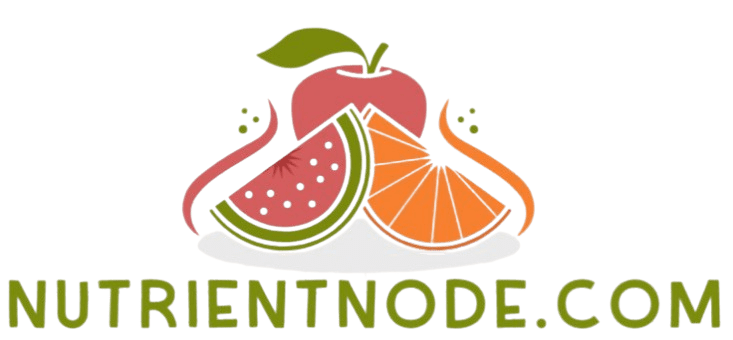The History of Dietary Guidelines in the U.S.
Understanding dietary guidelines is crucial as you learn about nutrition.
Let s explore how dietary guidelines have evolved over the years, tracing the journey from early recommendations to the standards you encounter today.
This article examines key recommendations and the controversies that accompany them, shedding light on their impact on public health while showcasing both achievements and criticisms.
The article also looks at potential changes and challenges that could influence the future of dietary guidelines. Join us as we uncover the narrative of nutrition in America.
Contents
- Key Takeaways:
- What are Dietary Guidelines?
- Evolution of Dietary Guidelines in the U.S.
- Current Dietary Guidelines in the U.S.
- Key Recommendations and Controversies
- Impact of Dietary Guidelines on Public Health
- The Future of Dietary Guidelines
- Frequently Asked Questions
- What is the history of dietary guidelines in the U.S.?
- Who creates the dietary guidelines in the U.S.?
- How often are the dietary guidelines in the U.S. updated?
- What is the purpose of the dietary guidelines in the U.S.?
- Do the dietary guidelines in the U.S. change over time?
- How are the dietary guidelines in the U.S. communicated to the public?
Key Takeaways:

The history of dietary guidelines in the U.S. dates back to the early 20th century and has undergone significant changes over time.
The current guidelines focus on key recommendations such as limiting added sugars and saturated fats, but they have also faced controversies and criticisms.
While dietary guidelines have succeeded in improving public health, they have faced criticism for being influenced by industry and lacking cultural sensitivity.
We must tackle these challenges to redefine the future of dietary guidelines!
What are Dietary Guidelines?
Dietary Guidelines are evidence-based recommendations crafted by the USDA and HHS. They aim to promote your health and prevent chronic diseases through informed dietary choices.
These guidelines are based on extensive nutrition science and consider various dietary patterns to help you maintain an adequate intake of essential nutrients.
Ultimately, they aim to enhance public health and reduce healthcare costs associated with diet-related illnesses.
Evolution of Dietary Guidelines in the U.S.
The evolution of Dietary Guidelines in the U.S. has been shaped by decades of research and public health initiatives designed to improve the nation s nutrition and health outcomes.
Beginning with the Dietary Goals for the United States in the 1970s, pivotal milestones such as the National Nutrition Monitoring and Related Research Act have guided the development of these guidelines.
This journey has involved systematic reviews and meaningful public engagement, ensuring that the recommendations stay relevant and impactful.
Early Recommendations and Changes Over Time
Early Dietary Guidelines primarily focused on fundamental nutrition needs, laying the groundwork for dietary patterns that prevent chronic diseases like obesity and cardiovascular issues.
Initially, the guidelines revolved around the main nutrients your body needs, like carbohydrates, proteins, and fats, highlighting the importance of various food groups for a balanced diet.
As knowledge deepened, the focus shifted toward more specific recommendations, promoting whole foods over processed ones.
For instance, in the mid-20th century, there was a strong push for low-fat dairy and lean meats, leading to the creation of the food pyramid.
These transformations reflect a growing understanding of how specific dietary patterns impact health outcomes and underscore the link between nutrition and chronic disease risk.
As a result, modern guidelines now embrace a holistic approach to eating, encouraging a diverse range of nutrient-rich foods that enhance your well-being.
Current Dietary Guidelines in the U.S.

The current Dietary Guidelines in the U.S. advocate for a holistic approach to nutrition, urging you to embrace a balanced intake of various food groups.
Tools like MyPlate visually illustrate the proportions of each group essential for a healthy diet.
These guidelines are thoughtfully crafted to meet the dietary needs of diverse populations while promoting optimal health and chronic disease prevention.
Key Recommendations and Controversies
Key recommendations within the Dietary Guidelines often spark discussions about fat intake and carbohydrate consumption. The inclusion of certain food groups also ignites debates, highlighting the complexities of creating effective nutrition policies aimed at preventing chronic diseases.
The push to reduce saturated fats types of fats found in some meats and dairy products while promoting whole grains can create conflicting demands as you navigate your dietary choices. This tension is more pronounced when considering public health implications; if these guidelines were widely adopted, they could lead to improved health outcomes.
However, disparities in access to healthy foods remain a significant issue across various communities. The financial implications of these recommendations could be considerable, potentially influencing healthcare costs by reducing the prevalence of diet-related chronic diseases, which currently burden the health system.
Therefore, understanding better these guidelines is crucial for effective implementation and for addressing ongoing debates surrounding them.
Impact of Dietary Guidelines on Public Health
The impact of Dietary Guidelines on public health is transformative. These guidelines shape nutrition research, inform policy development, and guide health recommendations, all aimed at reducing chronic diseases like obesity, type 2 diabetes, and cardiovascular issues.
By promoting informed dietary choices, these guidelines have the power to elevate health outcomes for diverse populations and enhance overall community wellness.
Successes and Criticisms
The successes of the Dietary Guidelines are evident: public awareness of nutrition has improved, leading to healthier dietary choices among many. However, criticisms often focus on how accessible and applicable these guidelines are in real-life situations.
These guidelines have spurred initiatives promoting balanced eating and encouraging the consumption of whole foods, contributing to reduced rates of diet-related diseases across various communities.
Yet, you may face significant barriers, such as limited access to fresh produce and a lack of nutritional education, raising important questions about the practicality of these recommendations.
Without effective public engagement strategies and ongoing nutrition education, incorporating these guidelines into your daily routine can be challenging. Addressing these gaps is crucial for fostering sustainable health-related behaviors and ensuring that dietary guidance reaches all segments of society.
The Future of Dietary Guidelines

The future of Dietary Guidelines must change urgently to address our health crisis, influenced by cutting-edge nutrition science and the rising incidence of chronic diseases and food insecurity.
Adapting strategies to tackle these pressing concerns will be crucial for ensuring advancements in health promotion and disease prevention.
Potential Changes and Challenges Ahead
As Dietary Guidelines evolve, you may notice a stronger emphasis on sustainability, cultural relevance, and personalized nutrition strategies. However, it’s essential to recognize ongoing challenges, such as the influence of the food industry and widespread public misconceptions.
Tackling these obstacles will be vital in promoting health effectively.
For instance, integrating environmental considerations into dietary recommendations could inspire you to embrace more plant-based foods, benefiting not only your health but also the planet.
By adopting tailored nutrition approaches that align with individual dietary needs and preferences, you can better engage diverse populations. Yet, the entrenched interests of large food corporations often complicate progress, as they may resist changes that threaten their profitability.
Overcoming societal misconceptions about nutrition like the belief that healthy food is always financially out of reach will require comprehensive educational campaigns.
Collaborative efforts among policymakers, nutrition experts, and community leaders can lay the groundwork for effective solutions that prioritize both health outcomes and sustainable eating practices.
Frequently Asked Questions
Have questions about dietary guidelines? Here are some common queries to consider:
- What are the main components of the Dietary Guidelines?
- How can I implement these guidelines in my daily life?
- What resources are available for learning more about nutrition?
Start exploring healthier food options today!
What is the history of dietary guidelines in the U.S.?
The first set of dietary guidelines in the U.S. was published in 1980 by the USDA and the Department of Health and Human Services.
These guidelines were created in response to concerns about high rates of diet-related illnesses, such as heart disease and obesity.
Who creates the dietary guidelines in the U.S.?

The USDA (United States Department of Agriculture) and the Department of Health and Human Services create the dietary guidelines in the U.S.
These agencies collaborate to develop scientifically backed advice for healthy eating.
How often are the dietary guidelines in the U.S. updated?
Every five years, our dietary guidelines get a fresh update, bringing you the latest insights into healthy eating!
The update process includes a thorough review of current scientific research and input from health and nutrition experts.
What is the purpose of the dietary guidelines in the U.S.?
The dietary guidelines in the U.S. provide clear advice for healthy eating.
They aim to boost our overall health and well-being and inform nutrition-related policies and programs.
Do the dietary guidelines in the U.S. change over time?
Yes, dietary guidelines in the U.S. evolve as new research and evidence become available.
As our understanding of nutrition and health improves, so do the recommendations for healthy eating.
How are the dietary guidelines in the U.S. communicated to the public?
The dietary guidelines in the U.S. are shared with the public through various channels.
These include the USDA website, educational materials, public health campaigns, and incorporation into programs at all government levels.






